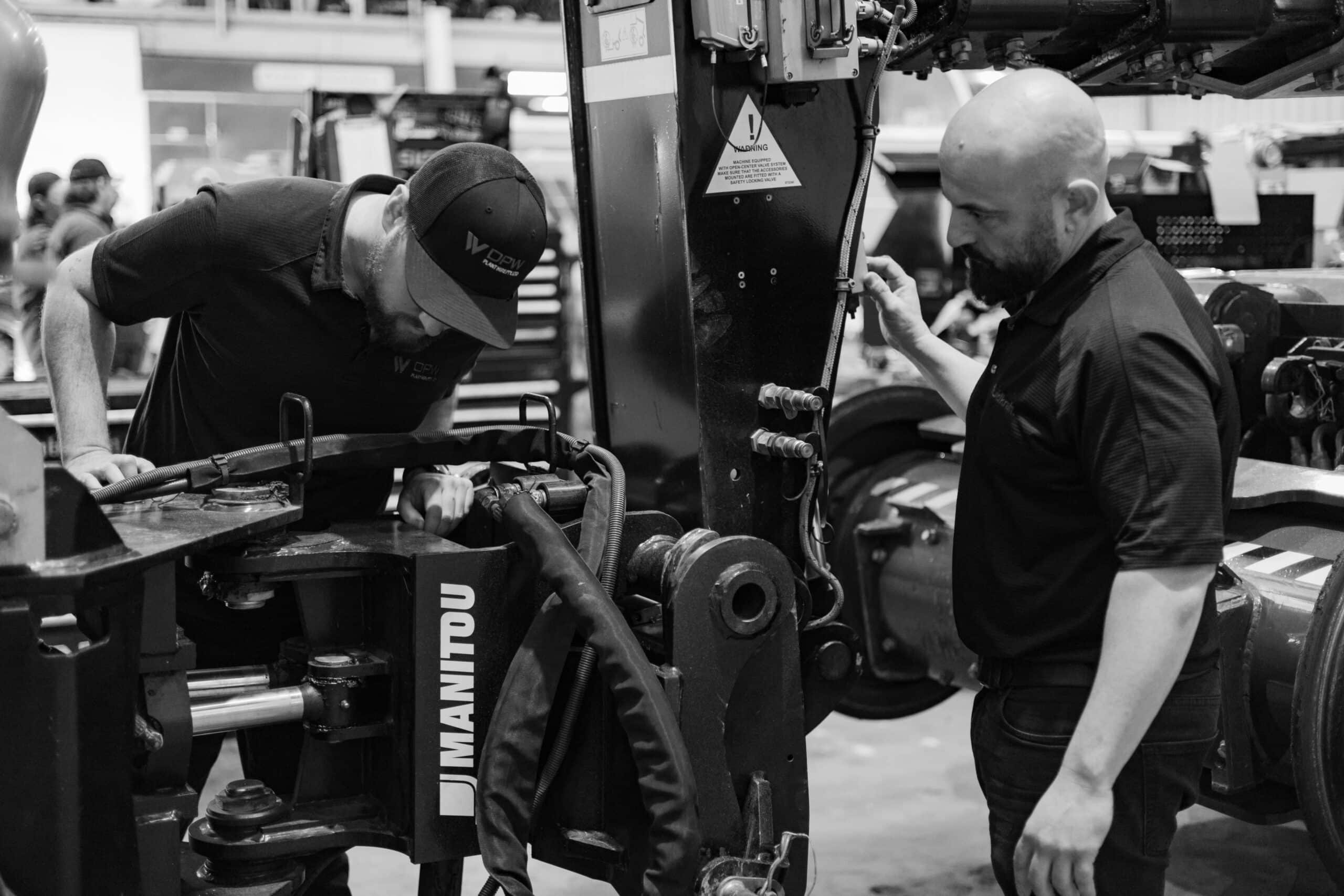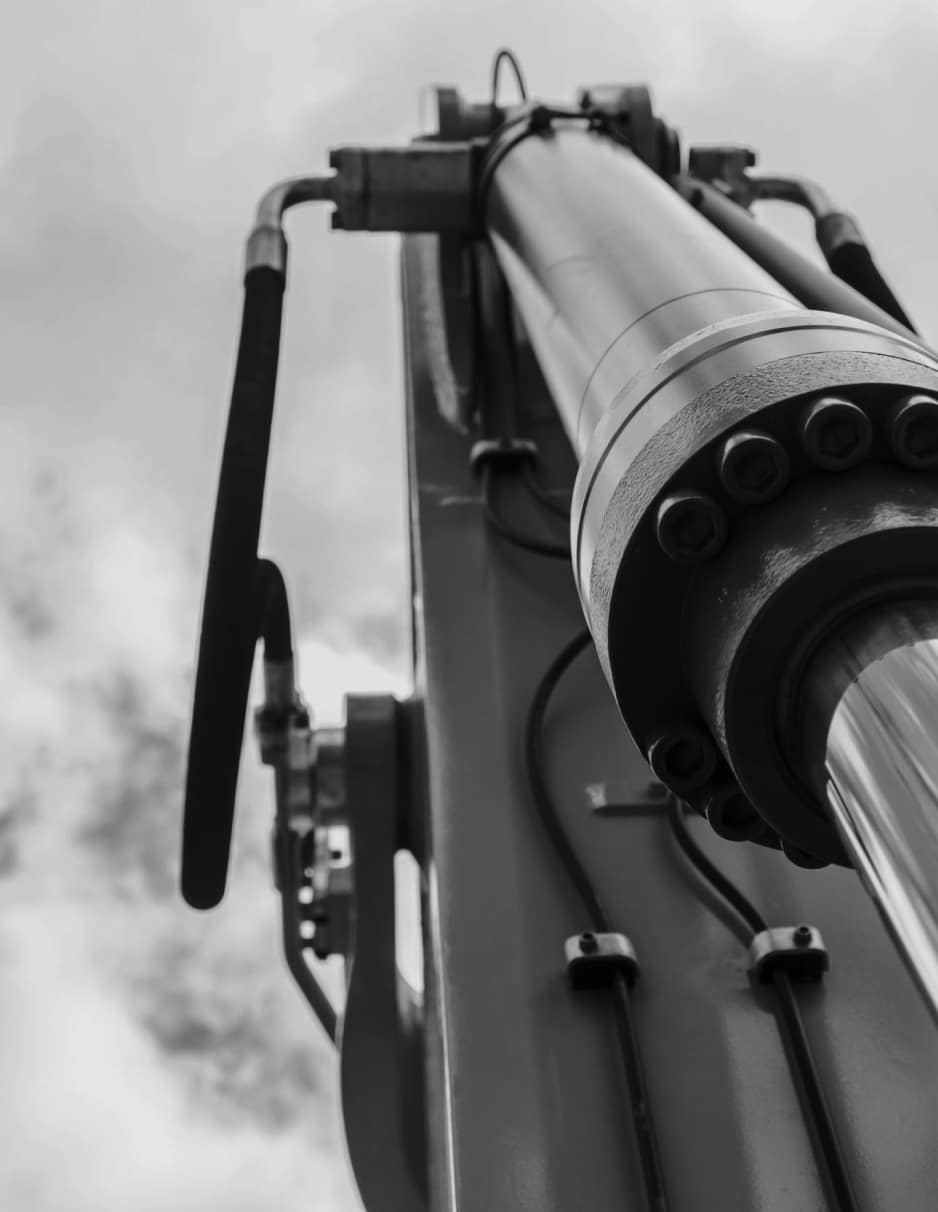Hydraulic systems and hydraulic power is arguably one of man’s most technological and innovative feats. It allows people and industries to generate energy from fluid and movement through a relatively small form factor. Its most prominent component, the hydraulic cylinder, is the powerhouse of any hydraulic machinery.
Hydraulic cylinders are a mechanical component that uses a piston to generate linear movement in machinery. This hydraulic system converts that linear movement into energy to be used throughout a hydraulic system.
Despite being only a part of the whole system, it is arguably the heart of any hydraulic powered machine since it is where power is generated. This means that hydraulic cylinder breakdown is critical enough to keep the entire system from functioning.
In this article, we will help you understand what hydraulic cylinders are, how they work, what kinds are available, and where they are used.
To learn all about hydraulic cylinders, keep reading!
What Is A Hydraulic Cylinder?
A hydraulic cylinder is a mechanical actuator that forms part of a machine’s hydraulic system. It creates linear movement through the conversion of hydraulic (fluid pressure) energy back to a mechanical movement.
The pressurised hydraulic fluid allows these actuators to produce motion and force to be converted into energy in either single or double action. When comparing single acting vs double acting hydraulic cylinders, single action hydraulic cylinders are pressurised for motion in one direction, while a double action hydraulic cylinder is able to move horizontally, vertically, or on any other plane of motion.
In hydraulic transmission, the medium used for energy transfer is liquid — usually in the form of mineral oil. In hydraulics, a volume flow (volume of liquid passing through the cross section per unit of time, the unit of which is m3/s) is formed whenever the power machine rotates the pump. The pressure generated by the hydraulic system is determined by the load, which is caused by either the valve or the cylinder, which in turn resists the flow of the liquid caused by the hydraulic pump.
When selecting a hydraulic cylinder, there are certain operating specifications that should be taken into consideration.
The key hydraulic cylinder specifications are:
- Stroke – The distance that the piston covers when it travels through the cylinder.
- Maximum Operating Pressure – This refers to the maximum working pressure the cylinder can safely maintain.
- Bore Diameter – This refers to the diameter at the cylinder bore.
- Rod Diameter – This refers to the diameter of the rod used in the cylinder.
Main types of hydraulic cylinder include:
- Tie-rod cylinder – This is a type of hydraulic cylinder which utilises tie-rods to provide additional stability. These are usually installed on the outside diameter of the cylinder housing. The cylinder tie-rod usually bears most of the applied load.
- Welded cylinder – A smooth hydraulic cylinder which uses a heavy-duty welded cylinder housing for further stability.
- Ram cylinder – As the name suggests, this type of cylinder acts as a ram. A hydraulic ram is a component whose piston rod has a cross-sectional area that is more than one-half of the moving components’ cross-sectional area. They are mainly used to push instead of pull, and usually found in high-pressure applications.
These subtypes are designed for specific applications, and when it comes to how to repair hydraulic cylinders, each will have different processes to follow.
How Does A Hydraulic Cylinder Work?
A hydraulic cylinder works by generating power by pressurising liquid through the linear motion of a piston. These cylinders are interconnected, filled with oil, and fitted with pistons on their sides. When force is exerted onto a smaller area of the piston, pressure is transmitted throughout the fluid.
In simple terms, the pressure placed on a piston will produce an equal amount of increase in pressure on the hydraulic system’s second piston. This allows for force to be generated even when using a small cylinder.
Hydraulic cylinders use liquids such as mineral oils due to the fact that they can not be compressed, and are sealed to ensure that the fluid remains inside.
What Are The Different Types of Hydraulic Cylinder?
There are five primary types of hydraulic cylinders:
- Single Acting Hydraulic Cylinders – In this type, the head end port of the cylinder operates in one direction. Once the cylinder barrel has been pumped with fluid, the piston rod is extended. In order to return to its non pressurised state, an external factor is required. Applying energy will cause the fluid to drain from the barrel and flow into the reservoir. Single Acting Cylinders are further classified into spring-extend and return cylinders. The former is designed to work pieces into place for an extended duration.
- Double Acting Hydraulic Cylinders – This type features the rod ends and heads that are equipped with ports for the purpose of pumping fluids. The ports are responsible for controlling the fluid’s flow as well as movement back and forth. When hydraulic fluid is pumped into the rod, the piston retracts. On the other hand, pumping hydraulic fluid into the head end will cause the piston rod to extend. As such, this type of cylinder is used in applications that require raising or lowering, like construction equipment.
- Tie-Rod Hydraulic Cylinders – These cylinders are generally used for fabrication in the manufacturing industry. They provide an advantage over other types of cylinders due to how easily they can be maintained, repaired and assembled. Threaded steel caps are used to hold the end caps of tie rods together, as well as to prevent fluid from leaking out of the cylinder. Four to as much as twenty tie rods can be used depending on the industry.
- Welded Rod Hydraulic Cylinders – These are cylinders whose end caps are welded to the barrel, which makes them difficult to assemble or disassemble for hydraulic cylinder maintenance or repairs. However, the lengths of the internal bearings, duty cycle and compact construction make them an excellent mobile option.
- Telescopic Cylinders – These cylinders are usually single acting (although occasionally are double acting) and contain upwards of five nested tubings inside one another. The tubing nested this way is also referred to as stages, where the diameter subsequently lessens along the length of the cylinder.
What Are The Different Parts of a Hydraulic Cylinder?
The parts that make up a hydraulic cylinder have remained practically unchanged since its introduction in the late 1790s due to its simple yet effective design. Many hydraulic cylinder parts can be repaired or replaced individually to extend the cylinder’s lifespan.
Hydraulic cylinders have seven basic components:
- Hydraulic Cylinder Barrel – The barrel keeps the cylinder’s pressure contained, and is usually constructed from honed steel tubes. Honing is an abrasive workshop machining process that produces precise and smooth surfaces — a characteristic that is required for hydraulic cylinders.
- Cylinder Head (End Cap) – Also referred to as the ‘blind end’, it is located inside the cylinder barrel and is never exposed to the elements. It encloses the pressure chamber at one end of the hydraulic cylinder, and could have either a seal gland, or an integrated rod sealing arrangement.
- Hydraulic Cylinder Base – Also referred to as the rod end, it contains the pressure from one end of the cylinder barrel. These are usually easily identified through the opening from which the cylinder rod connects to.
- Piston – Located within the hydraulic cylinder, this is used for the separation of the pressure zones inside the hydraulic cylinder barrel. Pistons are machined to fit either metallic or rubber seals that are either single-acting or double-acting.
- Piston Rod – Sometimes called a cylinder rod, it is made from chrome plated cold rolled steel, and attaches to both the piston and the cylinder head. This part connects the hydraulic cylinder to the mechanical component that is doing the work.
- Seal Gland – Or more specifically, the hydraulic cylinder gland, it is fitted with seals that prevent pressurised oil from leaking past and out the interfaces of both the cylinder rod and the cylinder head.
- Seals – These are the seals inside the seal gland, and are made and designed for the hydraulic cylinder’s working pressure, speed, operating temperature, and application. These are dynamic and can be found as single-acting or double-acting. Hydraulic cylinders that are used in low temperature environments are fitted with Elastomer seals constructed from nitrile rubber, or fluorocarbon viton for higher temperature applications.
Understanding hydraulic cylinder parts is essential to effective troubleshooting, maintenance and hydraulic cylinder repair.
What Are Hydraulic Cylinders Used For?
Hydraulic cylinders are commonly used in industrial and mobile applications. The simple and straightforward process of producing power makes them a reliable option in a large number of industries.
Any application that will require pushing, pulling, and lifting with a lot of power and stability will use hydraulic cylinders in some way. Hydraulic cylinders are used in hydraulic pumps, hydraulic brakes, and even hydraulic motors of automobiles. The lifts used to raise cars for maintenance or repair also utilise a hydraulic system.
Earthmoving & Construction: equipment used to move around dirt, gravel, or mulch such as skid steer loaders use hydraulic cylinders. Construction and infrastructure also sees a high concentration of hydraulic powered equipment — machines like bulldozers, excavators, cranes and forklifts.
Mining: earthmoving, transport and drilling equipment all utilise hydraulics in the mining industry.
Transport & Aviation: aviation & aerospace industries also see the benefit in using hydraulic cylinders. For instance, the take-off and landing gears of aeroplanes are powered by hydraulic systems. The transport and trucking industry also use hydraulics extensively.
Manufacturing: hydraulic cylinders are used both in the manufacturing of products and in some consumer goods. The personal fitness industry is also known for using hydraulic cylinders for gym machines, particularly those designed for resistance training.
Most mobile industrial machines rely almost entirely on hydraulics to achieve linear motion. As much of this equipment is located permanently on site, there is extensive demand for mobile hydraulics repairs and servicing to handle hydraulic cylinder issues with minimal disruption.
What Size Hydraulic Cylinder Do I Need?
The size of the hydraulic cylinder required for a specific application can be determined by dividing the total load by the amount of ‘points’. The more lift points a hydraulic system has, the higher capacity weight it can lift.
A point refers to the point where a load is being lifted. Not all loads can be a one-point lift, some will require multiple points to balance or distribute the weight. For example, a 1,000 kilogram load would need a hydraulic cylinder with only one lift point rated for 1,000 kilograms, or one with four lift points rated for 250 kilograms.
There are times where it is not possible to determine the exact weight of a load. In these situations, it is advised to overestimate instead of underestimating the weight.
The best case scenario is to use cylinders that are rated for a higher load than what it is expected to lift. This will make sure that any unexpected shift or change in the weight or its distribution will not risk damaging the load or the hydraulic cylinders lifting it.


